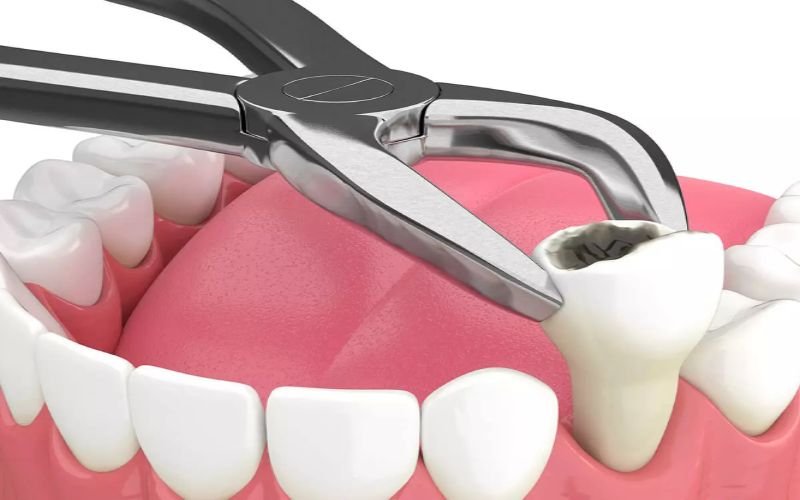
Menu
Tooth Extractions
What is Tooth Extractions?
Tooth extraction is a dental procedure in which the tooth is removed from its socket in the jawbone. This procedure is typically performed by a dentist or oral surgeon and may be necessary for various reasons, such as severe decay, damage, or overcrowding.

Reasons for Tooth Extraction:
Severe Tooth Decay:
- When a tooth is extensively decayed and cannot be effectively restored with a filling or crown, extraction may be needed to prevent infection or further damage.
Dental Trauma:
- Teeth that are fractured or damaged beyond repair due to trauma or injury may require extraction.
Gum Disease:
- Advanced periodontal (gum) disease can lead to the loss of supporting bone around the tooth, making extraction necessary if the tooth becomes loose or infected.
Overcrowding:
- In orthodontic cases, extractions may be performed to create space for proper alignment of the remaining teeth.
Impacted Teeth:
- Teeth that are trapped beneath the gum line or bone, such as wisdom teeth, may need to be extracted if they cause pain, infection, or damage to adjacent teeth.
Infection:
- An abscessed tooth with a severe infection that cannot be treated with root canal therapy or antibiotics may require extraction to prevent the spread of infection.
The Tooth Extraction Process:
Assessment and Preparation:
- The dentist or oral surgeon evaluates the tooth and surrounding area through X-rays and a clinical examination to determine the best approach for extraction.
Anesthesia:
- Local anesthesia is administered to numb the area around the tooth. In some cases, sedation or general anesthesia may be used, especially for complex extractions or multiple teeth.
Extraction:
- Simple Extraction: For a tooth that is visible and easily accessible, the dentist loosens it using special instruments and removes it with forceps.
- Surgical Extraction: For a tooth that is impacted or not fully erupted, a surgical extraction is performed. This may involve making an incision in the gum tissue and removing bone or sectioning the tooth for easier removal.
Post-Extraction Care:
- After the tooth is removed, the extraction site is cleaned and any necessary stitches (sutures) are placed. The dentist provides aftercare instructions to manage pain, swelling, and promote healing.
Aftercare and Recovery:
- Pain Management: Over-the-counter pain relievers or prescribed medications may be recommended to manage discomfort.
- Swelling and Bruising: Applying ice packs to the outside of the face can help reduce swelling and bruising.
- Oral Hygiene: It’s important to keep the mouth clean by gently brushing and avoiding the extraction site. Rinsing with saltwater can aid in healing.
- Diet: Stick to soft foods and avoid hot, spicy, or hard foods that can irritate the extraction site.
- Avoid Smoking: Smoking can interfere with the healing process and increase the risk of complications.
Potential Risks and Complications:
- Infection: There is a risk of infection at the extraction site if proper care is not taken.
- Dry Socket: This occurs when the blood clot that forms in the socket is dislodged or dissolves, exposing the bone and causing severe pain. It is more common in the lower jaw and can be treated with medication and care.
- Bleeding: Some bleeding is normal after an extraction, but excessive bleeding may require additional treatment.